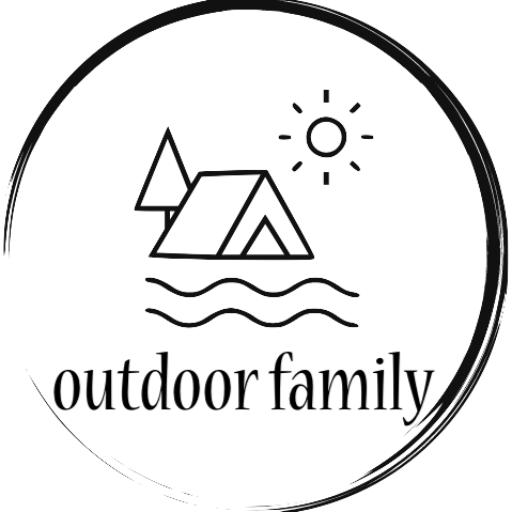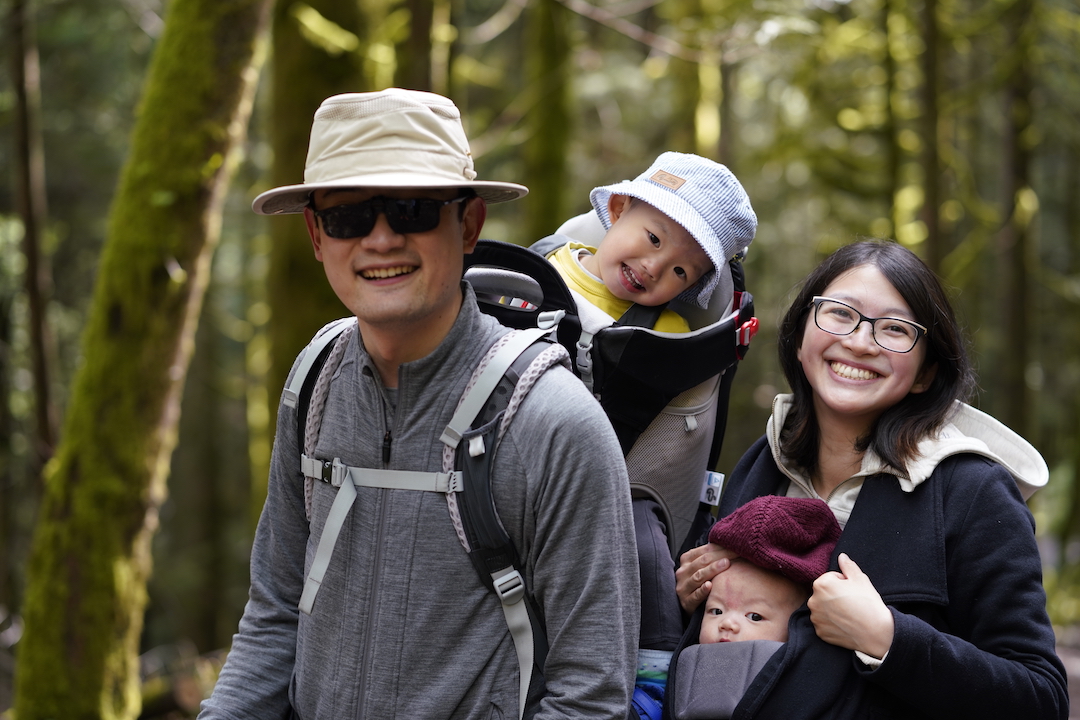Here are a few things we always bring when hiking with our two kids.

Hiking Carrier and Baby Carrier
A hiking carrier is the best to carry a baby/toddler around since it’s got the most back support, have several built in compartments so you can store essential items, and also a sunshade to block UV rays. It’s suited for babies who can sit up right and keep their head up (usually over 6 months).

There are several different types of hiking carriers on the market, but we love our Osprey Poco Plus. The Osprey Poco series are all very well designed in that it’s easy to adjust, provides comfortable back support and a mesh hip belt for additional security, several zippered compartments, can fit a 1.5 L water pack, adjustable stirrups to rest the little ones feet, and a sun shade. The PocoPlus provides an additional zippered lower compartment compared to the Poco. This carrier is meant for babies/toddlers weighing between 16-40 lbs (not for babies less than 6 months old).

For babies less than 6 months old, or babies not able to hold their head upright yet, baby carriers are a must for hiking. We use our Baby Bjorn carrier, but any carrier that makes you comfortable in is suitable.

Toddler and Baby Sun Hat
Toddlers and babies have delicate skin that are prone to sun burns. Prolonged sun exposure during hikes can be quite harmful to their skin. The ideal sun hat should be wide brimmed and also offer some ears and neck coverage. Our boys are currently using Jan and Jul Aqua Dry Adventure Sun Hat. These hats come with adjustable head and chin drawstrings and comes in a wide range of sizes (S: 0-6yrs, M: 6-24 months, L: 2-5 years, XL: 5-12 years).

Sunscreen
Sunscreen is a must if you are heading outdoor especially during sunny days. It prevents sun burns, sun damage and also skin cancer. When choosing sunscreens, it’s best to look at its ingredients. There are two main types of sunscreens on the market: Chemical and Physical Sunscreen. Chemical sunscreens (usually containing oxybenzone, avobenzone or octisalate) works by absorbing UV rays into the skin and converting it into heat and released by the skin. Physical sunscreens (usually containing zinc oxide or titanium dioxide ) works by creating a sheen on the skin to deflect away the harmful UV rays. It is best to use physical sunscreens for kids since it’s not absorbed and creates less skin irritation to sensitive skin. However, physical sunscreens are easily rubbed off (especially with excessive sweating or when in contact with water); thus it is also important to reapply every two hours if possible.
We are currently using Thinkbaby sunscreen. It is a physical sunscreen with 20% zinc oxide and SPF 50+. It has a nice cream consistency and a gentle fragrance.

Insect Repellents
The most effective insect repellents are products that contain DEET. We are currently using OFF! Family Care, which contains DEET 5% and can be used for kids over 6 months of age. According to the manufacture, this product should be applied every 2 hours, but for kids age 2-12, do not apply more than 3 times per day. For babies 6 months to 2 years, do not apply more than once a day. Avoid eyes, mouth and hands when applying.
There are other types of insect repellents on the market. Some claim to be DEET free and are from natural sources, such as citronella or lemongrass. These do offer some protection; however, usually they need to be reapplied more often.
Aside from using repellents to avoid insect bites,you can also try wearing lighter coloured shirts and pants with longer sleeves.
First Aid Kit
A small kit that contains essentials to help with minor scrapes and wounds is also important. We have a small kit with a few bandaids, small gauze, skin tape, small scissor, and a polysporin ointment.
Snacks
Snacks are so crucial to make sure the toddler won’t get hangry during long hikes. Packing in some easy to handle snacks, such as granola bars, fruit pouches, muffins, crackers or fruits can make the hike more enjoyable and more likely that you can complete the trail.
Water
Remember to bring enough water. A hydration pack can be useful, since it doesn’t have the added weight of a water bottle, is easily accessible and can usually hold more water than conventional bottles. Our son learned to use the straw at about 2 years of age.



One response to “Hiking Essentials (For toddler friendly hikes)”
[…] throughout the way. Several mosquitoes came by while I sat to breastfeed, so insect repellent, preferably with DEET, is recommended protect from some itching mosquito […]